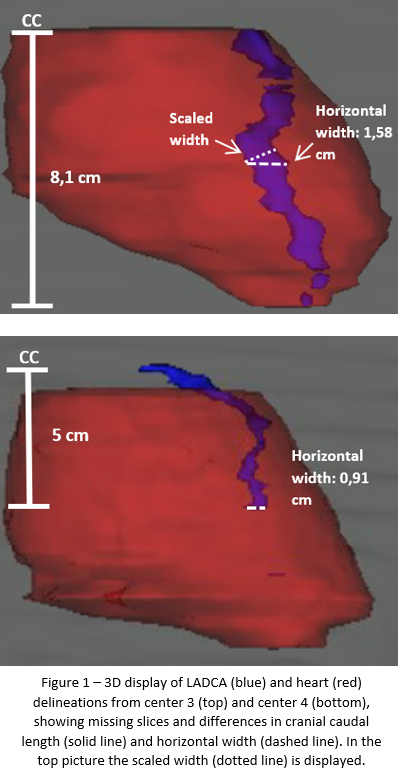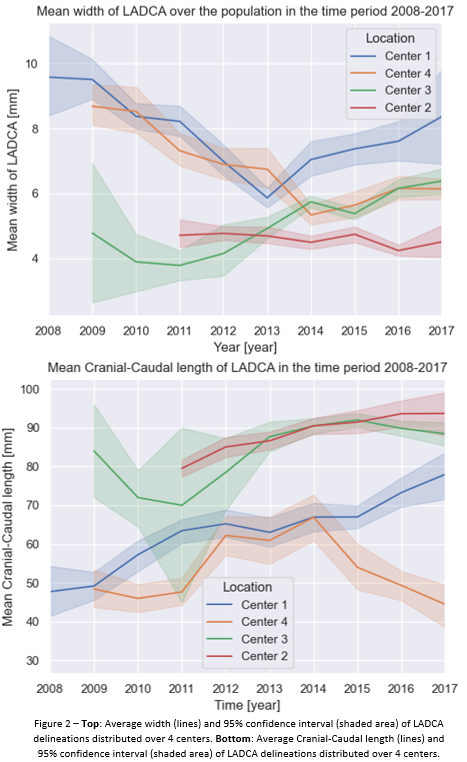Parametrization of artery delineation and nationwide implementation in the DBCG RT Nation cohort
Emma Skarsø Buhl,
Denmark
OC-0780
Abstract
Parametrization of artery delineation and nationwide implementation in the DBCG RT Nation cohort
Authors: Emma Riis Skarsø1, Lasse Hindhede Refsgaard1, Thomas Ravkilde2, Henrik Dahl Nissen3, Martin Berg3, Kristian Boye4, Claus Kamby5, Kirsten Jakobsen6, Mikael Olesen6, Birgitte Vrou Offersen1,2,7, Stine Sofia Korreman1,2,7
1Aarhus University Hospital, Department of Experimental Clinical Oncology, Aarhus N, Denmark; 2Aarhus University Hospital, Department of Oncology, Aarhus N, Denmark; 3Vejle Hospital, University Hospital of Southern Denmark, Department of Oncology, Vejle, Denmark; 4Copenhagen University Hospital, Rigshospitalet, Department of Oncology, Copenhagen, Denmark; 5Copenhagen University Hospital - Rigshospitalet, Department of Oncology, Copenhagen, Denmark; 6Zealand University Hospital, Department of Clinical Oncology and Palliative Care, Næstved, Denmark; 7Aarhus University Hospital, Danish Center for Particle Therapy, Aarhus N, Denmark
Show Affiliations
Hide Affiliations
Purpose or Objective
Delineation
of structures of limited visibility and small size is prone to large
uncertainties. With adaptive treatment planning and automatic delineation
making its entry in clinical routine, it is desirable to have a framework for
quality assurance (QA) of delineation of such structures. In this study we
develop a parameterization of left anterior descending coronary artery (LADCA)
delineation. We test the method in a national
dataset.
Material and Methods
We included
structure delineations from 4598 danish high-risk breast cancer patients
treated with adjuvant radiotherapy across the nation during 2008-2017. A
national LADCA delineation guideline was published in 2013. The coordinate sets
of the individual delineations were exported and analysed in python (v 3.9.6). LADCA
was parameterized using metrics describing volume, cranial-caudal (CC) length, the
cumulative length, width, anterior-posterior and lateral-medial consistency
between slices, missing structure slices and number of patients with delineations.
The cumulative
length was determined by summing the vector-distance between consecutive centroid
points in all CT slices. The x and y centroid values were calculated by
averaging all x- and y-coordinates respectively. If the distance between two adjacent
centroid points was >
80 mm, the point was removed from the calculation as an outlier.
The width
was determined by scaling the horizontal width by cos( ), where
), where  is the angle
between the horizontal and scaled width, Figure 1.
is the angle
between the horizontal and scaled width, Figure 1.
Results
were stratified by year and treating center. Significance was tested with the
Mann-Whitney U-test.
Results
The automatic
method was successfully used in all patients included in the Danish Breast
Cancer Group (DBCG) RT Nation cohort.
In total 2018
(44%) of patients had LADCA delineated. Distribution per center including number of missing slices is shown below.
| # patients
included (% of total # patients)
| # patients
with LADCA delineations (% of total # LADCA delineations)
| Total
# missing slices
|
| Center 1 | 1132
(25%)
| 579
(29%)
| 31
|
| Center 2 | 922
(20%)
| 320
(16%)
| 5
|
| Center 3 | 1802
(39%)
| 676
(33%)
| 20
|
| Center 4 | 742
(16%)
| 443
(22%)
| 54
|
In the
period around the implementation of national delineation guidelines (2012-2014),
the differences between the centers were smallest, Figure 2. For mean width
there was a significant difference between centers in the periods 2008-2012 and
2014-2017 (p<0.001). For CC length, no significant differences were found
between center 2 and 3 (2011-2016). Center 4 differed significantly from the
other centers in CC length in the periods 2010-2011 and 2015-2017 (p<0.001).


Conclusion
We have
developed a method for parametrization of delineations of LADCA. We have
successfully used the method for characterization of LADCA delineations in a national
DBCG patient cohort. Our results showed significant differences in delineations
of LADCA among centers
and need for regularly
QA regarding delineations. This method has potential as a metric for QA, and to
be generalizable for other tubular structures.